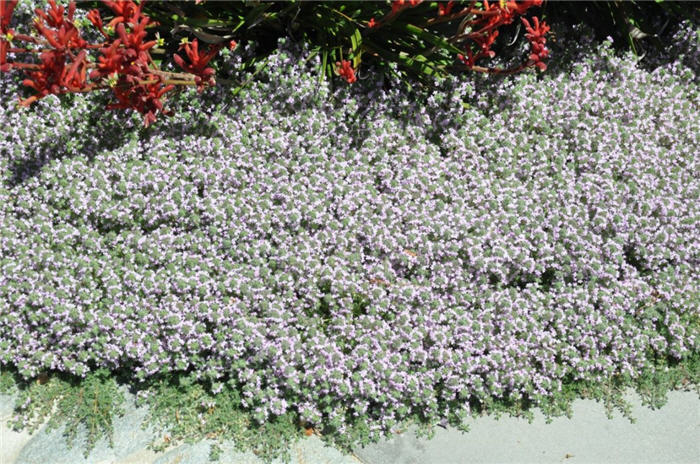| Botanical Name: Thymus pseudolanuginosus | |
| Common Name: Woolly Thyme |

-
Anatomy
-
Culture
-
Design
Plant Type
Ground cover, Perennial
Height Range
Under 1'
Flower Color
Pink
Flower Season
Intermittent
Leaf Color
Blue Green, Grey Green, Purple
Bark Color
n/a
Fruit Color
n/a
Fruit Season
n/a
Sun
Full
Water
Low, Medium
Growth Rate
Moderate
Soil Type
Sandy, Clay, Loam
Soil Condition
Average, Poor, Well-drained, Dry
Soil pH
Neutral
Adverse Factors
n/a
Design Styles
English Cottage, Japanese, Mediterranean, Ranch
Accenting Features
Fragrance, Unusual Foliage
Seasonal Interest
Winter, Spring, Summer, Fall
Location Uses
Perennial Border, Foundation, Parking Strip, Raised Planter, Walkways, With Rocks
Special Uses
Mass Planting, Lawn Alternative, Small Spaces
Attracts Wildlife
n/a
Information by: Stephanie Duer
Photographer: Tina Olsen Binegar
Photographer: Tina Olsen Binegar
-
Description
-
Notes
Woolly Thyme is a perennial groundcover growing in a low mat, typically under 2 inches, but spreading 16 inches or more. Foliage is fuzzy and gray-green during the summer months, and tinged with a lovely burgundy hue in the fall and winter. An evergreen thyme, it makes a wonderful groundcover, even an alternative to turf, in low traffic areas. And as it tolerates some foot traffic, its wonderful between pavers and along pathways. It has a pink summer bloom, though it rarely flowers; the lovely fall color fills the void.
Grow in well drained soil in full sun. Adaptive to soil types, but well draining is a must. If using over a large area for a groundcover, plant on 15 to 18 inch centers to ensure that it fills in by the end of the season. Woolly thyme rarely blooms, but it is evergreen. Low water, deer and rabbit resistant, and low-or-no fertilizer.